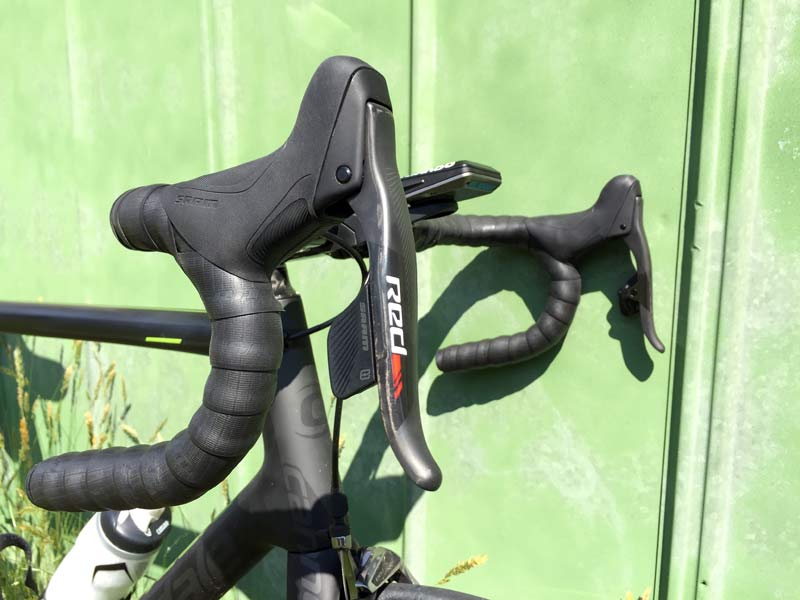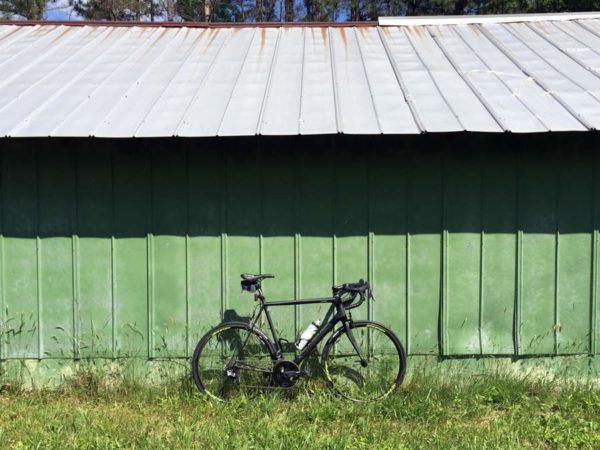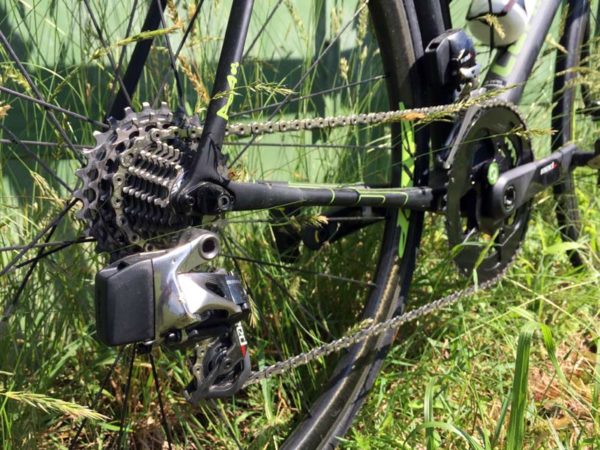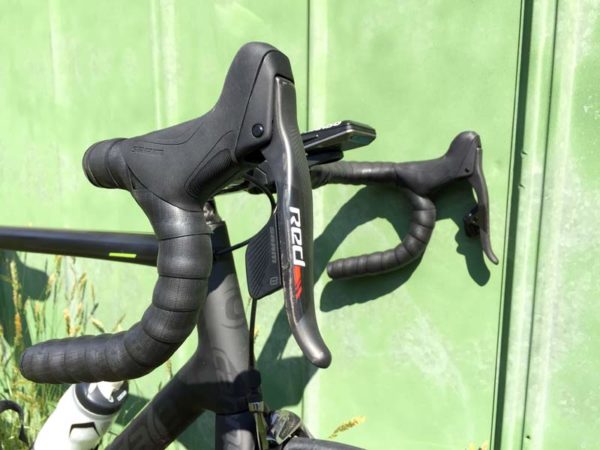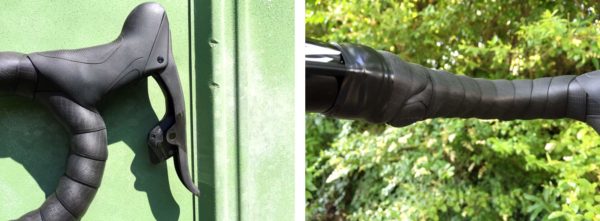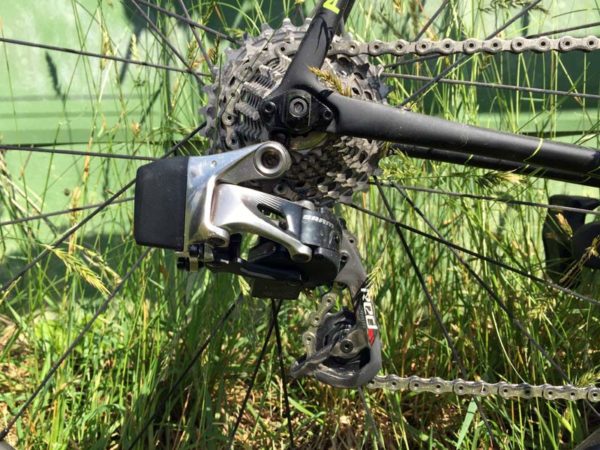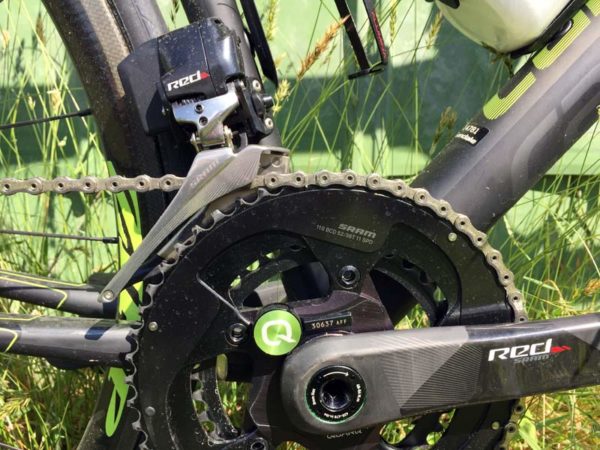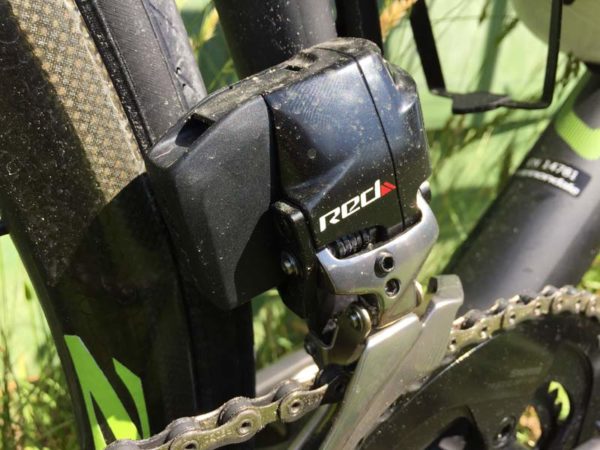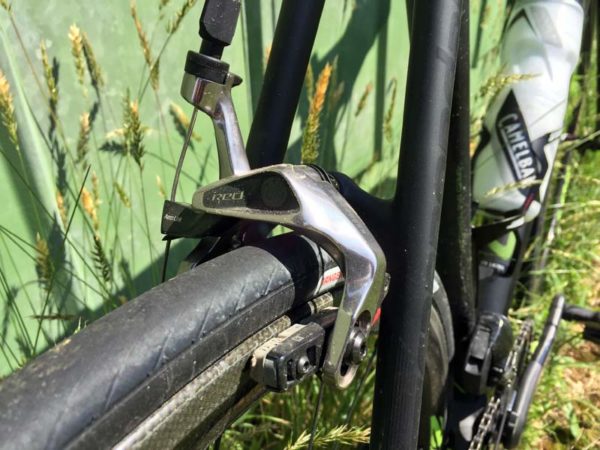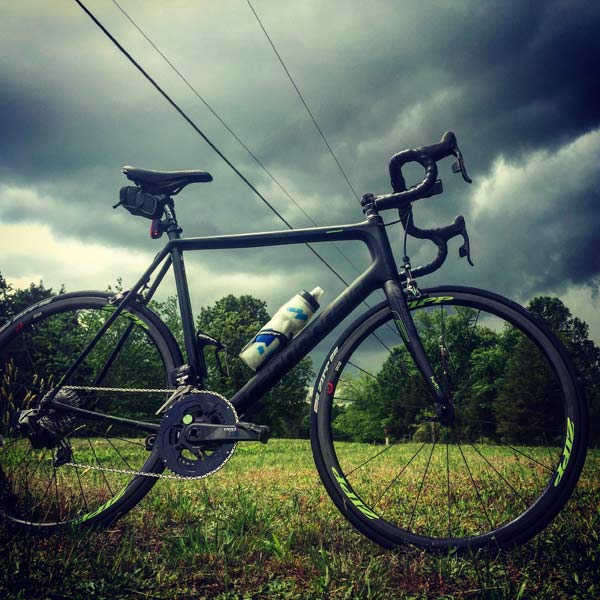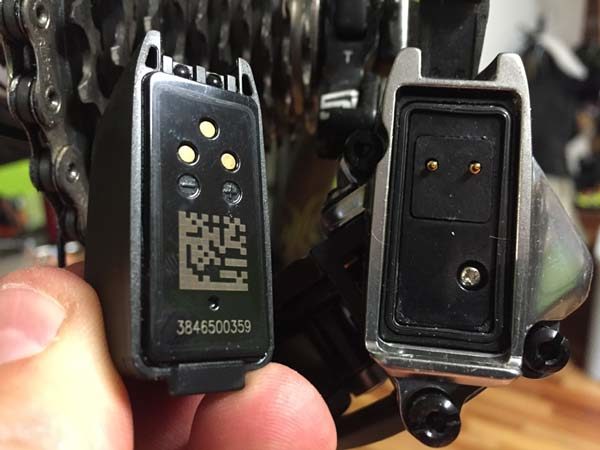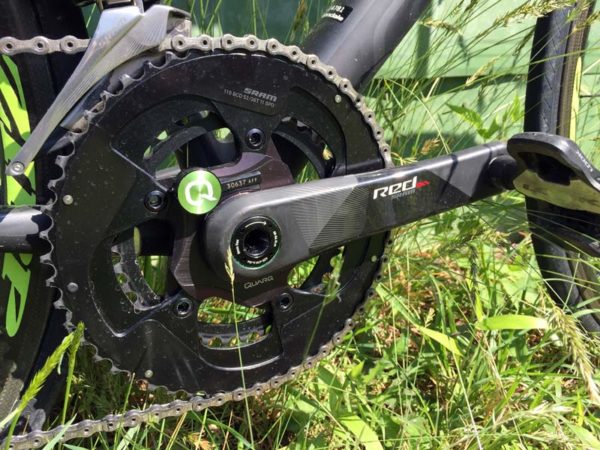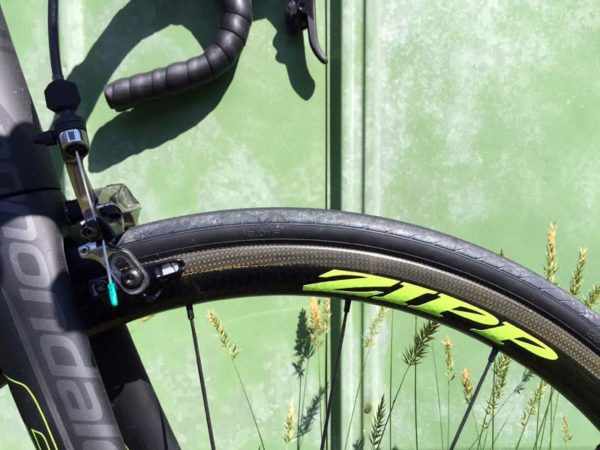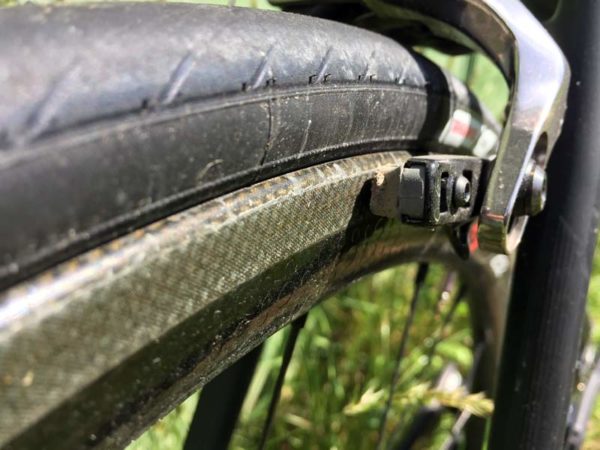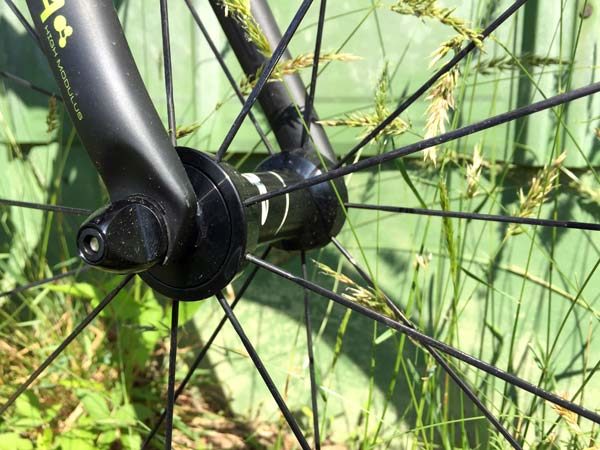By now, we’ve covered the full development story, technology and first impressions and weigh in of SRAM Red eTap. So, after all that, having a bike with it for long term review let me focus on the ride experience rather than retelling its full story.
The short of it is this: I wanted it when it came out, and I still want it. On all my road bikes. But I will happily wait for the hydro disc brake version. Why happily wait? Because eTap’s electronic competition from Shimano and Campagnolo are both very good, so for me personally, there’s no sense in switching until I can get a complete disc brake system. For those still happy with rim brakes, it’s probably only the brakes will be changing – the shifting bits aren’t likely (I’m guessing, anyway) to see much change for at least a year or more since SRAM put so much development time and money into this product. So, if you’re keen on making the leap to electronic, it’s probably time to go wireless…
Our review bike was here for a few months, and while I didn’t keep track of the miles, I rode it as much as I could. The Cannondale SuperSix was a fine test sled, and the bike was shipped with an alloy Zipp bar/stem and carbon Zipp seatpost, Zipp 202 carbon clinchers and a Quarq-equipped power meter SRAM Red 22 crankset. Check the bottom of this post for a bonus review of the wheels and power meter.
The bike came fully built, but I did pull off all eTap parts to weigh them when it first arrived. Reassembly was a breeze, as would be expected for a wireless system. During the entire review period, I never had to charge the batteries, which suggests heavy users could get by with a once-a-month charge schedule just for peace of mind. Not too bad.
The novelty of right goes harder, left goes easier, both shift the front wears off, but the appreciation of its simplicity does not. It just works so damn well and is so intuitive that it doesn’t matter if you’re coming from a mechanical SRAM group or any version of Shimano or Campy group, you’ll learn this in a minute and then it’s just second nature. Thank goodness they had so many competitive patents to work around or we might not have gotten this.
On the fly rear derailleur adjustments are super simple, too. Just hold the little button on the inside of the paddle while shifting it and it make micro adjustments. You could (at your own risk, of course) do it while riding if need be. The Blips are also fantastic, and if on my own bike I’d have moved them inboard just slightly, but the various wire lengths that link them to the shifters allow you to set it up however you want.
Assuming you just can’t wait for the eTap Hydro version we keep seeing in the wild (here, here and here), you could by the triathlon eTap group with the BlipBox and simply put some Blips on or under the hoods and make your own eTap hydro group with any hydraulic levers and brakes you want. We’re guessing TRP is already working on a hack for this to go with their Di2 version.
Rear shifting is crisp and quick enough. It’s also smooth through its multishift function, which runs it through multiple gears if you hold down the shift button. After one particularly rainy ride, I left the bike outside to dry and the wind blew it over, landing directly on the derailleur and pedal, after which it continued to shift perfectly. (Sorry SRAM, but that’s what the scratch is from. Next round’s on me.)
The front derailleur has no micro adjustments from the buttons, it’s set up during install using the same process as their mechanical front derailleurs. As in, take your time and get it right and you’re rewarded with strong, precise shifting that needs no trim adjustment. Unlike Shimano and Campy’s electronic shifting, the eTap Yaw FD does not make small movements as the chain moves across the cassette. I heard minimal chain contact on the FD’s cages at the extremes of cross chaining, mainly big-big, but I was so infrequently in that combo that it’s really a non-issue.
Battery placement is secure, even over gravel roads and bunny hops.
While I’ve mostly progressed to disc brakes on my road bikes, I can still appreciate a fine pair of mechanical rim brake calipers. I’ve never had a problem with SRAM’s rim brakes, and these were no exception. Their cammed design provides plenty of power and smooth operation.
After all of the testing SRAM did on this group, it’s no surprise it works as well as it does. Some early spy shots showed them riding it in freezing temps on a cyclocross bike, which can certainly challenge a battery’s output. I didn’t mimic those conditions, but I did end up in a heavy downpour on one ride that thoroughly soaked everything as I ticked off the wet, wet miles to get home. Those storm clouds in the pic above weren’t kidding, and the Instagram filter applied to that pic exaggerates nothing.
At the end of the ride, though, the insides of the battery were dry as a bone, and everything worked flawlessly throughout the storm and on subsequent rides. Heck, there wasn’t even any rust on the chain or cassette despite zero post-ride lubing or maintenance.
After all that, my opinion stands unchanged. Or, if anything, improved. I must have this group on my road bike.
Accessorizing the eTap group was sister brand Quarq’s spider-mounted power meter. They delivered it with the Qalvin setup equipment, but I didn’t use that. Instead, I simply turned on the new Wahoo ELEMNT GPS cycling computer and accompanying iPhone app, told the ELEMNT to look for a power meter, selected the Quarq and it was all set. It literally took one minute and I was ready to ride. Compliments to both brands for making their stuff easy to use and interoperable. Quarq puts the battery on the outside with a simple screw cap for easy changes and etches the ANT+ ID onto the spider, making set up super easy. Instructions read: zero.
The power measurement showed up on the ELEMNT flawlessly until my last ride on the bike, when it showed no data on several occasions during the ride. Which was weird because the Quarq was providing the cadence data to the ELEMNT also, and that number popped back onto the screen relatively quickly, but the power number took anywhere from two to five minutes before reappearing. Unfortunately, I don’t know which device was to blame.
Before sending the bike, SRAM’s technical marketing rep gave us a choice of chainring and cassettes sizes and Zipp wheel options. I chose the shallow 202s since we have a few rolling hills and I prefer a snappy lightweight set of wheels. That, and I’ve got several other deeper wheels in on review so a change of pace was in order. At a claimed weight of 1,450g, they’re reasonably light and accelerate quickly. Zipp’s tires also performed well, but I did keep everything at a slightly higher than normal 95-100psi since they’re not tubeless ready. I’d rather have a bit firmer ride than risk pinch flat, but I’d really rather have tubeless. Someday, Zipp, someday…
In dry conditions, the braking with Zipp’s own Tangente Platinum Pro Evo pads was flawless. Impressive even. But on that rainy day? Holy crap, they scared the bejeezus outta me. To be fair, I’ve ridden plenty of carbon rim brake wheels in slightly misty or damp conditions and the braking has been fine. And in those situations, the Zipp’s were fine, too. But in a downpour? The braking simply disappeared in a frightening manner.
To continue being fair, I doubt this is a Zipp specific condition, I mention this more as a general warning for anyone that’s not been caught in a downpour while also riding carbon rim brake wheels: Give yourself about five times the expected braking distance. Fortunately, I was on backroads with minimal traffic, so I could experiment. Short braking efforts might as well have never happened. But, when dragging the brakes for a while, about 20 seconds of light but continuous pad-on-rim action would dry or heat the rim and pad enough to finally give them some traction, at which point braking power returned to about 70-80% of dry conditions. Which was actually pretty surprising. Let off and it got soaked and/or cooled again and things quickly went to pot, but for sustained descents in the wet, it’s worth keeping very light pressure on the brakes to keep them primed.
Some of Zipp’s prior generation hubs were recalled, but I had no problem with this latest version. They rolled smooth, felt tight and performed flawlessly. The engagement is reasonably quick, and they do offer a disc brake version with thru axle compatibility, too. At which point, you’d be less concerned with the braking talk above and more interested in their overall performance. To which I would say, they’re very good. I’ve ridden Zipp’s wheels at various SRAM road bike product launches over the years and never had an issue. Same goes for these. At 32mm deep, the 202’s aren’t taking full advantage of their Firecrest aerodynamics R&D, but they do hold their line in a corner and react quickly.
